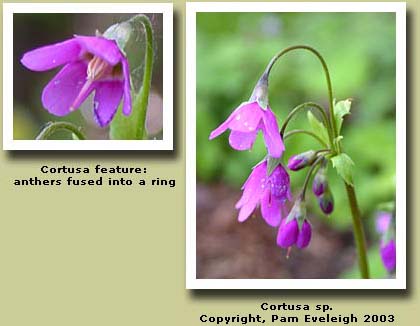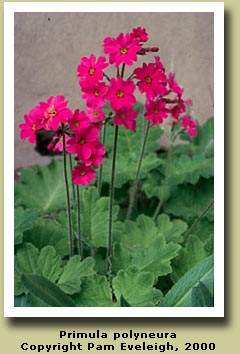|
|
It's common for some misidentified seed to be offered in the seed exchanges and Primula seed is no exception. From my experience, seed that is usually misidentified ends up being Cortusa or Primula polyneura. In order to break the chain where this seed is grown on and then donated back to the seed exchanges under the same incorrect name, it is best to familiarize yourself with these two plants.
Recent DNA analysis has shown that the genus
Cortusa is very closely related to Primula. In fact, it could be that this
genus belongs within Primula. It is no wonder that gardeners think
this plant is a primula! The most common cortusa species is C. matthioli,
but there are other species such as turkestanica and brotheri though some
taxonomists suggest these are all variations of one species. Look closely
at the flower of a cortusa and you will see that the anthers are fused
into a ring. I have
received cortusa seed under the name of P. takedana, P. jesoana, and P. heucherifolia.
This is a very pretty primula, easily grown in ordinary garden soil. It is a valuable addition to the garden as it blooms later than most primulas and the best forms sport fluorescent, hot pink flowers. Primula polyneura is a part of Section Cortusoides. Other familiar species in that Section are: P. sieboldii, P. mollis, P. cortusoides, P. jesoana, P. septemloba, P. geraniifolia, P. heucherifolia, and P. kisoana. Look for leaves with rounded lobes, sparcely hairy above, but cottony hairs underneath (though not nearly as hairy as kisoana). I have received P. polyneura seed under the name of P. kisoana and P. heucherifolia.
Compare with these primulas
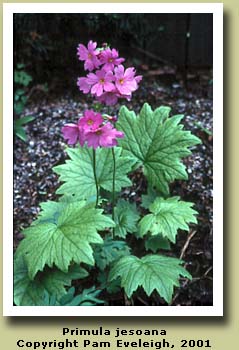
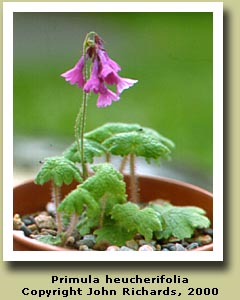
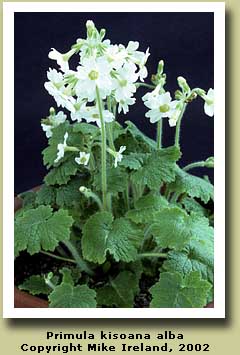
Copyright Pam Eveleigh ©2003, All Rights Reserved |
